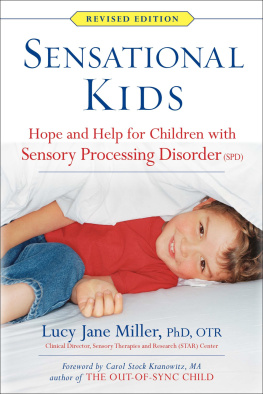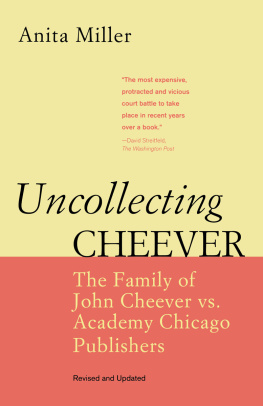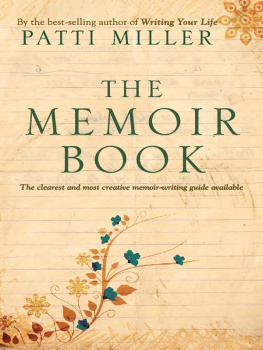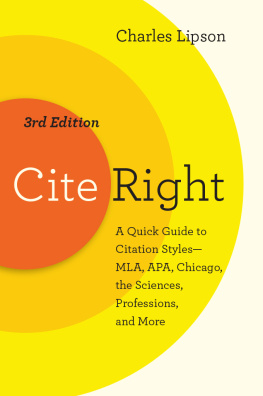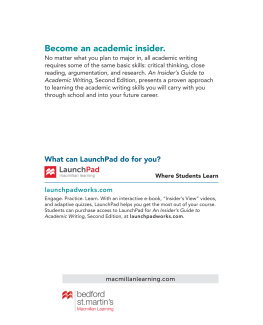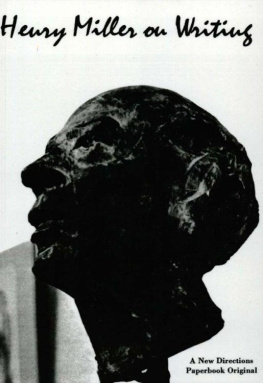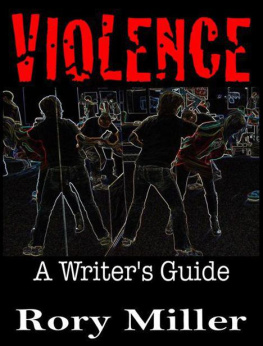Jane E. Miller - The Chicago Guide to Writing about Numbers
Here you can read online Jane E. Miller - The Chicago Guide to Writing about Numbers full text of the book (entire story) in english for free. Download pdf and epub, get meaning, cover and reviews about this ebook. year: 2015, publisher: University of Chicago Press, genre: Home and family. Description of the work, (preface) as well as reviews are available. Best literature library LitArk.com created for fans of good reading and offers a wide selection of genres:
Romance novel
Science fiction
Adventure
Detective
Science
History
Home and family
Prose
Art
Politics
Computer
Non-fiction
Religion
Business
Children
Humor
Choose a favorite category and find really read worthwhile books. Enjoy immersion in the world of imagination, feel the emotions of the characters or learn something new for yourself, make an fascinating discovery.

- Book:The Chicago Guide to Writing about Numbers
- Author:
- Publisher:University of Chicago Press
- Genre:
- Year:2015
- Rating:5 / 5
- Favourites:Add to favourites
- Your mark:
- 100
- 1
- 2
- 3
- 4
- 5
The Chicago Guide to Writing about Numbers: summary, description and annotation
We offer to read an annotation, description, summary or preface (depends on what the author of the book "The Chicago Guide to Writing about Numbers" wrote himself). If you haven't found the necessary information about the book — write in the comments, we will try to find it.
The Chicago Guide to Writing about Numbers — read online for free the complete book (whole text) full work
Below is the text of the book, divided by pages. System saving the place of the last page read, allows you to conveniently read the book "The Chicago Guide to Writing about Numbers" online for free, without having to search again every time where you left off. Put a bookmark, and you can go to the page where you finished reading at any time.
Font size:
Interval:
Bookmark:


Digital Paper
Andrew Abbott
Telling about Society
Howard S. Becker
Tricks of the Trade
Howard S. Becker
Writing for Social Scientists
Howard S. Becker
Permissions, A Survival Guide
Susan M. Bielstein
The Craft of Research
Wayne C. Booth,
Gregory G. Colomb, and
Joseph M. Williams
Legal Writing in Plain English
Bryan A. Garner
From Dissertation to Book
William Germano
Getting It Published
William Germano
Cite Right
Charles Lipson
How to Write a BA Thesis
Charles Lipson
The Chicago Guide to Writing about Multivariate Analysis
Jane E. Miller
Indexing Books
Nancy C. Mulvany
A Manual for Writers of Research Papers, Theses, and Dissertations
Kate L. Turabian
Students Guide for Writing College Papers
Kate L. Turabian
THE CHICAGO GUIDE TO WRITING ABOUT
Numbers
SECOND EDITION
JANE E. MILLER
THE UNIVERSITY OF CHICAGO PRESS
Chicago and London
JANE E. MILLER is a research professor at the Institute for Health, Health Care Policy and Aging Research and professor in the Edward J. Bloustein School of Planning and Public Policy at Rutgers University, as well as the faculty director of Project L/EARN. She is the author of The Chicago Guide to Writing about Multivariate Analysis, Second Edition, also from the University of Chicago Press.
The University of Chicago Press, Chicago 60637
The University of Chicago Press, Ltd., London
2004, 2015 by The University of Chicago
All rights reserved. First edition, 2004.
Second edition, 2015.
Printed in the United States of America
24 23 22 21 20 19 18 17 16 15 1 2 3 4 5
ISBN-13: 978-0-226-18563-7 (cloth)
ISBN-13: 978-0-226-18577-4 (paper)
ISBN-13: 978-0-226-18580-4 (e-book)
DOI: 10.7208/chicago/9780226185804.001.0001
Library of Congress Cataloging-in-Publication Data
The Chicago guide to writing about numbers. Second edition / Jane E. Miller
pages cm
Includes bibliographical references and index.
ISBN 978-0-226-18563-7 (cloth : alk. paper) ISBN 978-0-226-18577-4 (pbk. : alk. paper) ISBN 978-0-226-18580-4 (e-book)
1. Technical writing. I. Miller, Jane E. (Jane Elizabeth), 1959 II. Series: Chicago guides to writing, editing, and publishing.
T11.M485 2015
2014032722
 This paper meets the requirements ofANSI/NISO Z39.48-1992 (Permanence of Paper).
This paper meets the requirements ofANSI/NISO Z39.48-1992 (Permanence of Paper).
To my parents,
for nurturing my
love of numbers
CONTENTS
.
.
TABLES
FIGURES
BOXES
ACKNOWLEDGMENTS
This book is the product of my experience as a student, practitioner, and teacher of quantitative analysis and presentation. Thinking back on how I learned to write about numbers, I realized that I acquired most of the ideas from patient thesis advisors and collaborators who wrote comments in the margins of my work to help me refine my presentation of quantitative information. This book was born out of my desire to share the principles and tools for writing about numbers with those who dont have access to that level of individualized attention.
Foremost, I would like to thank my mentors from the University of Pennsylvania, who planted the seeds for this book. Samuel Preston was the source of several ideas in this book and the inspiration for others. He, Jane Menken, and Herbert Smith not only served as models of high standards for communicating quantitative material to varying audiences, but taught me the skills and concepts needed to meet those standards.
Many colleagues and friends offered tidbits from their own experience that found their way into this book, or provided thoughtful feedback on early drafts. In particular, I would like to thank Deborah Carr, Diane (Deedee) Davis, Don Hoover, Ellen Idler, Tamarie Macon, Julie McLaughlin, Dawne Mouzon, Louise Russell, Usha Sambamoorthi, Tami Videon, and Lynn Warner. Susan Darley and Ian Miller taught me a great deal about effective analogies and metaphors. Jane Wilson gave invaluable advice about organization, writing, and design, while Tamara Swedberg and Jim Walden provided key support on graphical design. Kathleen Pottick, Keith Wailoo, and Allan Horwitz provided indispensable guidance and support for bringing the first edition of this book to fruition. As the director of the Institute for Health, Health Care Policy, and Aging Research at Rutgers University, David Mechanic generously granted me the time to work on this venture. Finally, I would like to thank my students for providing a steady stream of ideas about what to include in the book, as well as opportunities to test and refine the materials.
INTRODUCTION
Writing about numbers is an essential skill, an important tool in the repertoire of expository writers in many disciplines. For a quantitative analysis, presenting numbers and patterns is a critical element of the work. Even for works that are not inherently quantitative, one or two numeric facts can help convey the importance or context of your topic. An issue brief about education policy might include a statistic about the prevalence of school voucher programs and how that figure has changed since the policy was enacted. Or, information could be provided about the impact of vouchers on students test scores or parents participation in schools. For both qualitative and quantitative works, communicating numeric concepts is an important part of telling the broader story.
As you write, you will incorporate numbers in several different ways: a few carefully chosen facts in a short article or a nonquantitative piece, a table in the analytic section of a scientific report, a chart of trends in the slides for a speech, a case example in a policy statement or marketing report. In each of these contexts, the numbers support other aspects of the written work. They are not taken in isolation, as in a simple arithmetic problem. Rather, they are applied to some larger objective, as in a math word problem where the results of the calculations are used to answer some real-world question. Instead of merely calculating average out-of-pocket costs of prescription medications, for instance, the results of that calculation would be included in an article or policy statement about insurance coverage for prescription medications. Used in that way, the numbers generate interest in the topic or provide evidence for a debate on the issue.
In many ways, writing about numbers is similar to other kinds of expository writing: it should be clear, concise, and written in a logical order. It should start by stating an idea or proposition, then provide evidence to support that thesis. It should include examples that the expected audience can relate to, and descriptive language that enhances their understanding of how the evidence relates to the question. It should be written at a level of detail that is consistent with its expected use. It should set the context and define terms the audience might not be expected to know, but do so in ways that distract as little as possible from the main thrust of the work. In short, it will follow many of the principles of good writing, but with the addition of quantitative information.
Next pageFont size:
Interval:
Bookmark:
Similar books «The Chicago Guide to Writing about Numbers»
Look at similar books to The Chicago Guide to Writing about Numbers. We have selected literature similar in name and meaning in the hope of providing readers with more options to find new, interesting, not yet read works.
Discussion, reviews of the book The Chicago Guide to Writing about Numbers and just readers' own opinions. Leave your comments, write what you think about the work, its meaning or the main characters. Specify what exactly you liked and what you didn't like, and why you think so.

